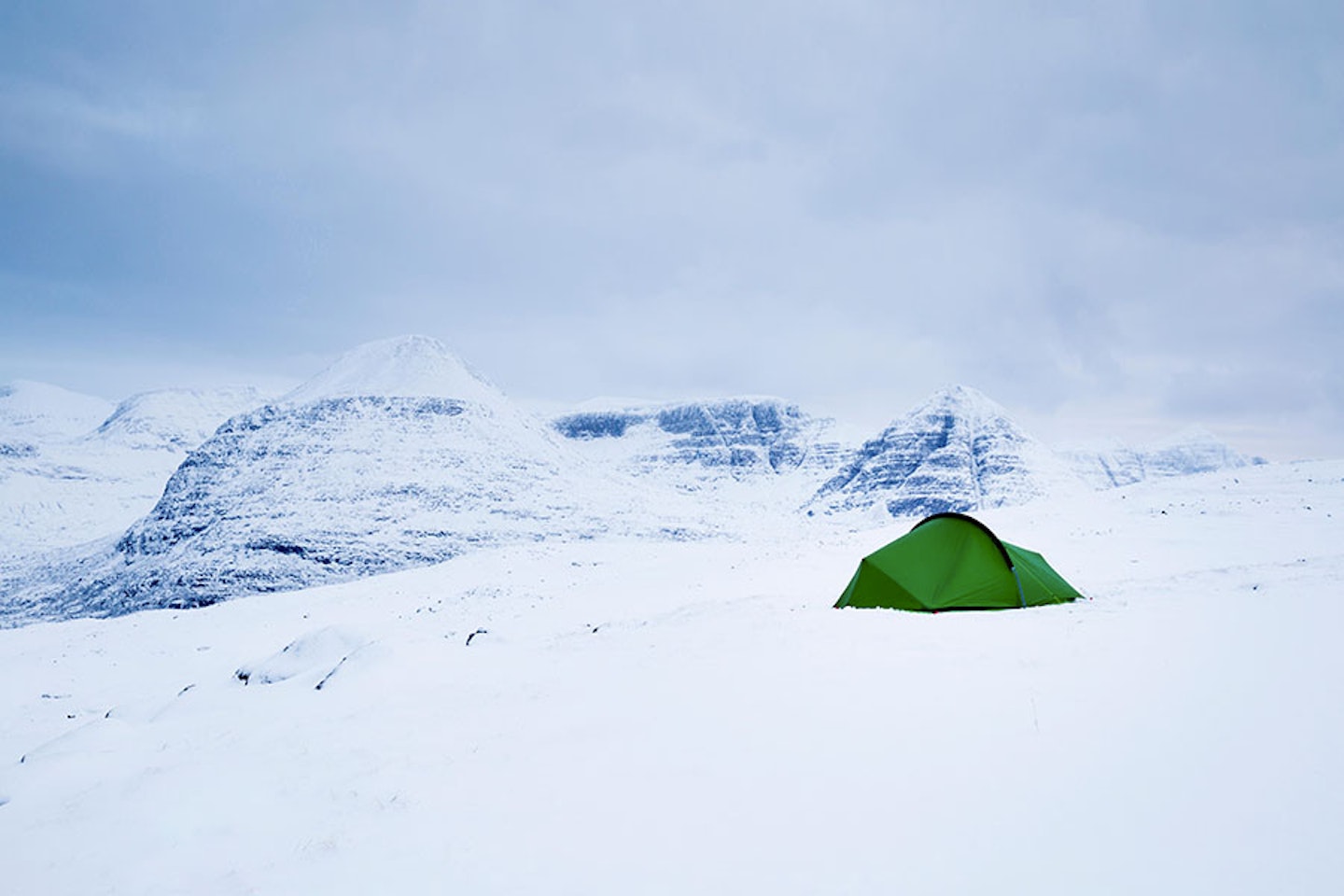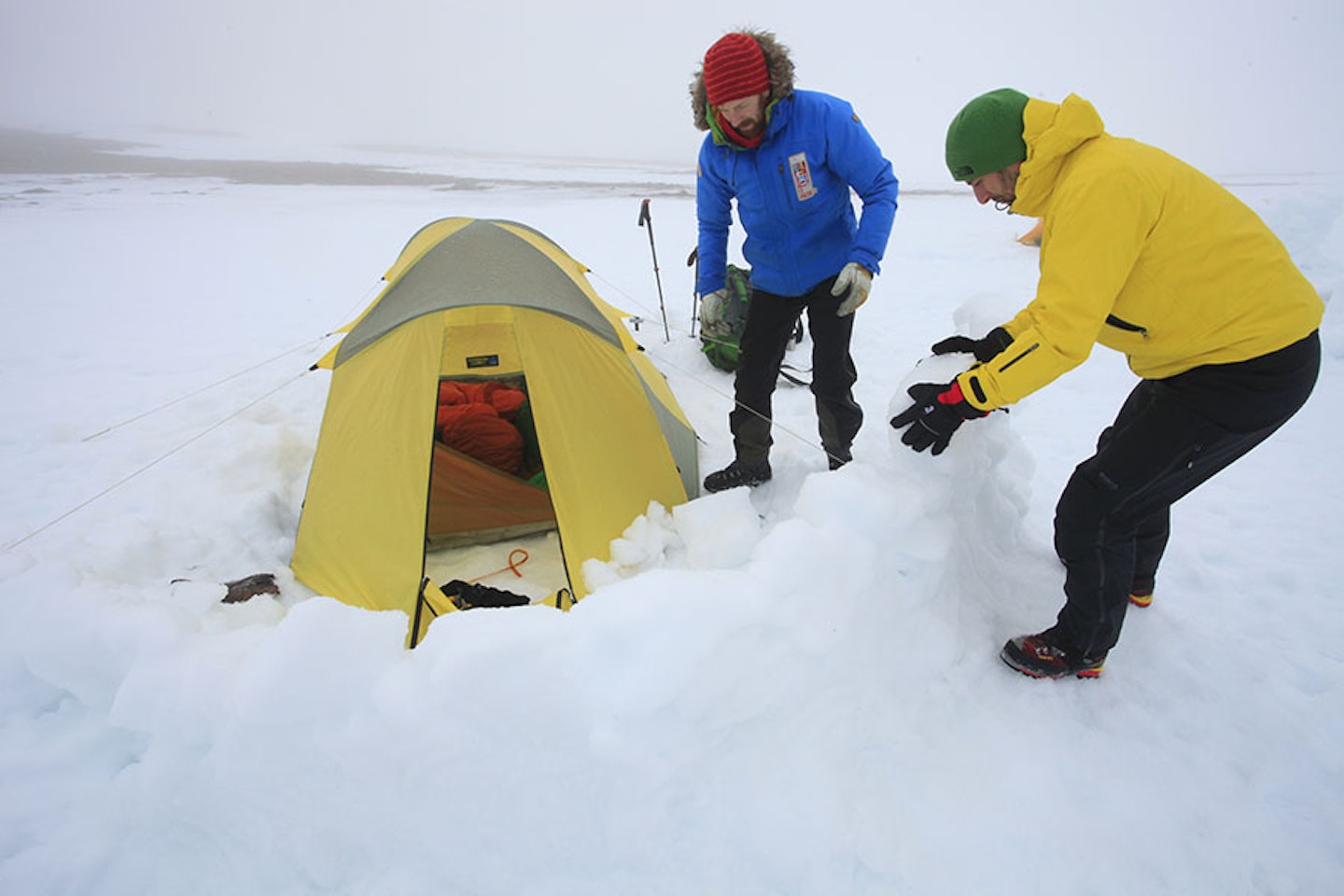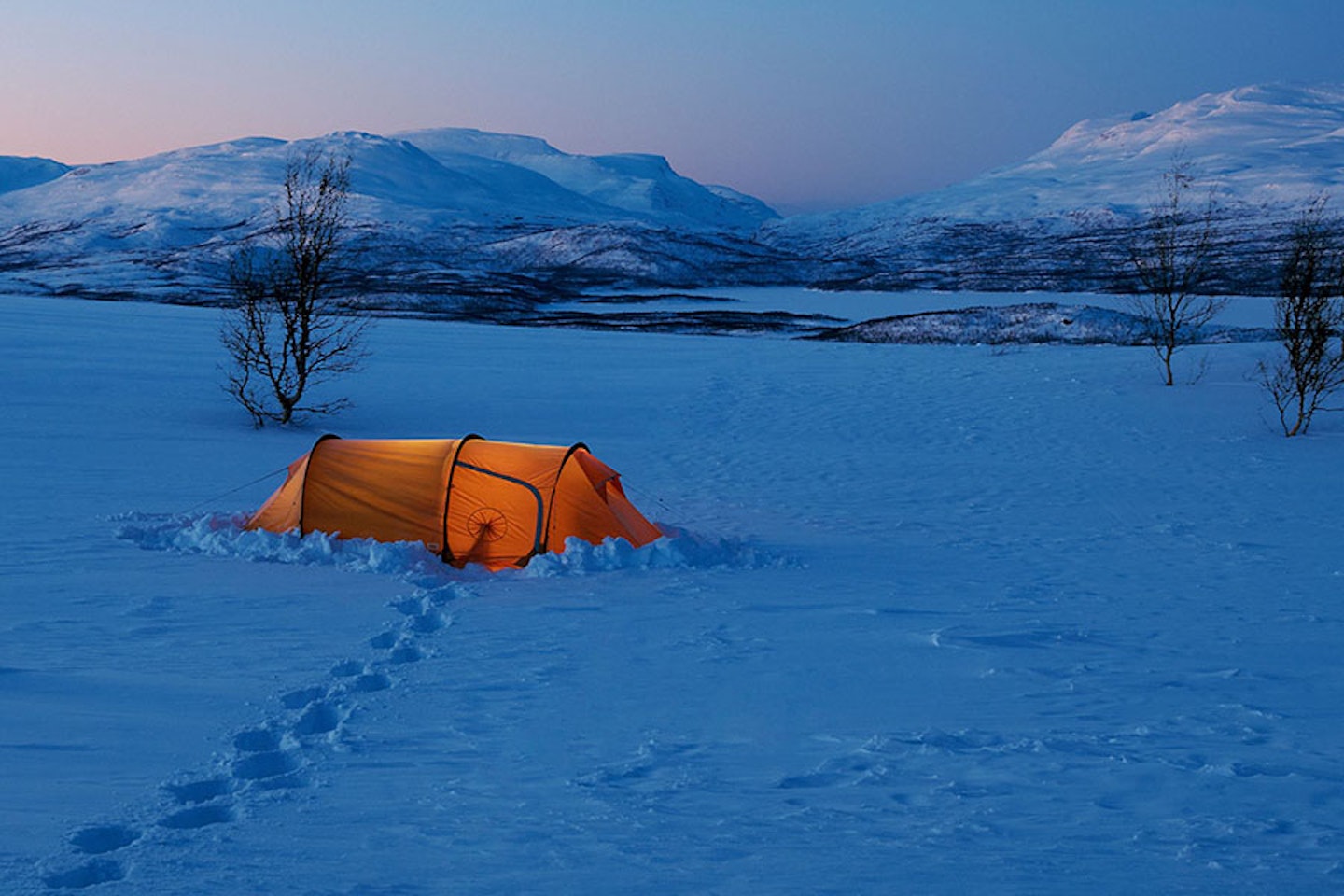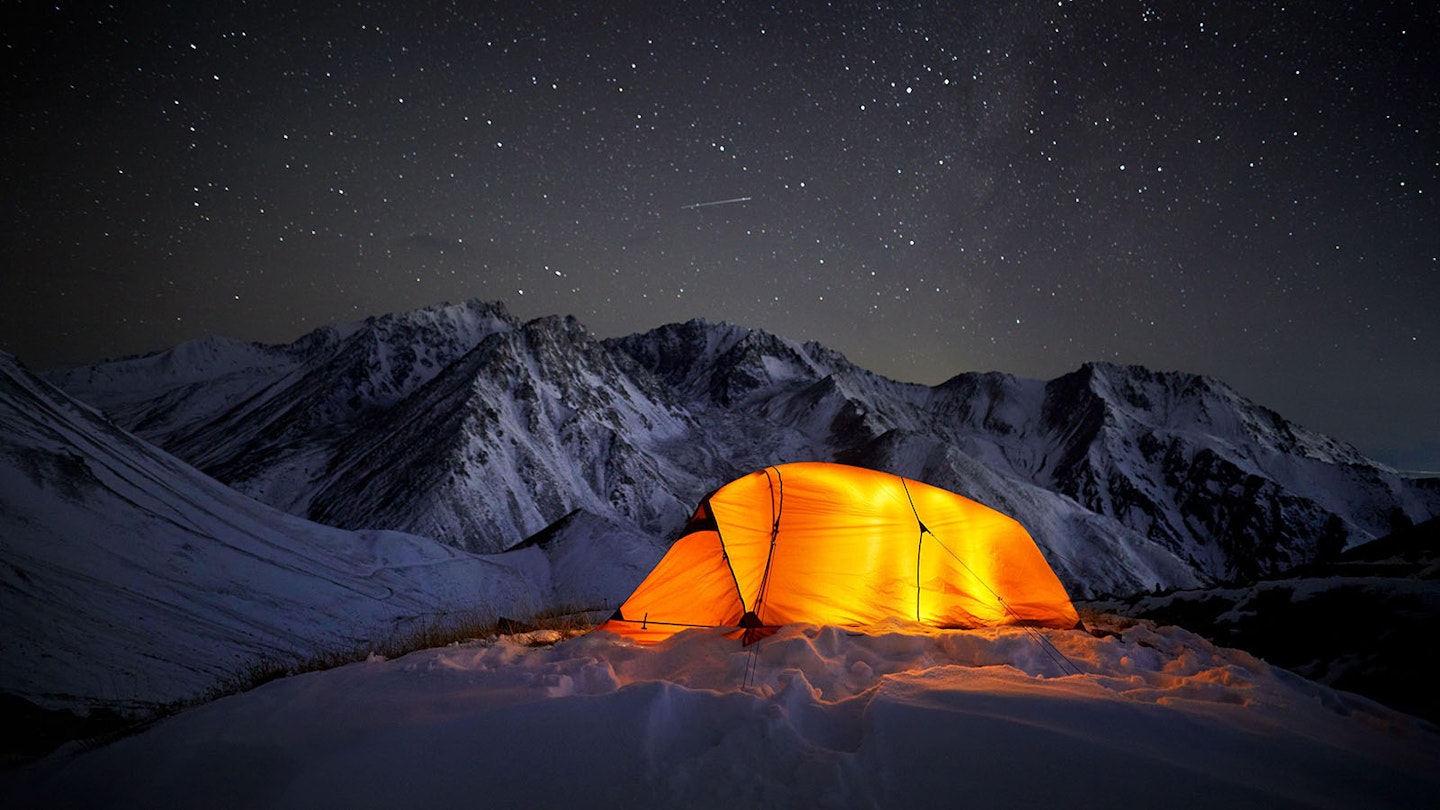Grabbing your 4-season hiking tent and embarking on a winter camp in the mountains can be an awesome experience. Arguably, the mountains are in their most natural state in winter, not least because there are fewer folk about.
They’re also at their most peaceful – at least, they can be if the weather isn’t raging, with wind threatening to tear you from the hillsides and hail being hurled with stinging ferocity.
Whether it’s as a means to explore more of the mountains during the shorter days, or to experience the breath-taking beauty of a sunrise from a snow-blanketed peak, there are plenty of reasons why camping out should be something you consider in the winter months. But, because of the weather’s ability to make life difficult, most people shy away from doing so.
However, with the right kit and the appropriate know-how camping out in the hills is something that can be enjoyed all year round. Not sure where to start? We’re here to help. In this guide, you’ll learn what kit you need, how to use it, and glean a few extra tips that mean winter camping needn’t be an exercise in suffering and survival, but an experience that can be enjoyed in comfort.
What to look for in a winter tent

Weather- shedding design
Dome tens and geodesic designs are popular in winter due to their ability to bear the weight of snow and ice. But strong tunnel tent designs can work too, so long as they have been created with winter use in mind.
Strong poles
Winter or 4-season tents should come with more robust poles. Some tents – particularly tunnel designs – may even use double poles to provide options between weight or strength.
Avoid inner-first pitching
To keep the weather on the outside, look for tents that pitch flysheet first or, ideally, all as one with the inner and outer together.
Deep flysheet
You want a flysheet that extends as close to the ground as possible, leaving little or no gap for weather to get in underneath.
Low mesh content
In summer, mesh panels on the inner tent are great for ventilation. In winter, they let heat out, so the inner should be mostly solid fabric with just small or coverable mesh ventilation panels.
Snow skirt
Some expedition tents have an additional flap of material around the hem of the flysheet. This is designed to be buried under snow to keep the flysheet fixed to the ground and removing any gaps for ultimate weather protection.
Space – but not too much
A spacious porch is useful for storing kit or for cooking under cover (although ALWAYS with good ventilation and with great care). But you don’t want too much space inside the tent, as it’s harder for your body heat to keep it warm and it will feel cold.
Making your pitch

Pick your spot
Find a flattish area that’s not in a hollow where it could flood in heavy rain or directly below an avalanche prone slope under snow. Consider the wind direction and how the shape of the landscape might provide shelter or channel the wind.
Snow shovelling
If the ground is covered in snow it may be necessary to flatten it by excavating and then trampling the area. Don’t remove all the snow though – it actually provides some insulation beneath you.
Tether the tent
Get a peg in and attach a guy line to it as soon as possible. This means that if the wind gusts as you’re setting up, your tent won’t be blown away.
Position the tent
Insert and fix the poles, then position the tent so its most streamlined profile is facing into the wind. This is easier to do with a free-standing tent but is potentially more important with a tunnel tent.
Secure the guy lines
In snow, pegs may work best buried horizontally, stamping snow down on top to freeze them in place. Make use of rocks or other solid objects for extra security.
Heavy winter conditions
If your expedition tent has a snow skirt, ensure it is buried with a good dump of snow all around the flysheet. If blizzard conditions are likely, building a protective barrier wall from snowblocks on the windward side of the tent provides additional protection.
Be prepared to move
If the wind is strong and changes direction it may be necessary to reposition the tent and start again. This is preferable to the tent collapsing around you in the night!
Our top tips

Take a book
Winter nights are long and sitting outside enjoying the stars may not be an option. Something to keep you occupied in the evenings will stave off boredom.
Fuel and treat yourself
In cold weather it’s important to keep your energy up, so enjoy some calorie-rich treats that you might not normally allow yourself.
Get cosy in your sleeping bag
An uninsulated flask or bottle filled with hot water and stuffed into a sock makes an excellent hot water bottle.
Keep key gear inside
Keep anything you don’t want frozen inside your tent. This includes water, food, electronics, and even your boots (but brush all the snow off first).
Take pyjamas
Well, an extra set of base layers and socks that you can change into to sleep in – particularly rewarding if your day clothes are wet.
Kit to consider
Pegs for snow
Larger snow stakes designed specifically to hold in snow make securing a tent in full winter conditions less challenging.
Warmer sleeping bag
Look at the sleeping bag comfort rating. In winter, a lower limit well into the minus figures is desirable. A bag that can be cinched in around the head and shoulders will also help trap heat.
Thermal liner
A fleece sleeping bag liner will add a few degrees of extra warmth to a sleeping bag.
Bigger rucksack
With the extra layers, thicker sleeping bag and tougher tent, you needed a big pack.
Insulated sleeping mat
You can lose more body heat to the ground than through the air. An insulated sleeping mat, such as those which contain down or synthetic insulation, makes a huge difference to how warm you feel.
Extra headtorch and batteries
You’ll be using a torch for longer periods, and cold temperatures can drain batteries. A spare head torch is essential, as is a means of re-charging or re-powering electronics.
Cold weather gas
Gas canisters are less efficient in the cold, so some contain a mix specifically created to perform in cold temperatures.
Snow shovel
Always a useful tool to take out into the snow, but even more so for camping where it can be used to level a pitch or dig snow blocks for shelter.
Sit-mat
Useful all year round, but even more appreciated in winter; nobody wants frozen buns from sitting on the icy ground.
A pot to p**s in
A spare bottle that will enable you to go for a pee in the night without leaving the tent may be appreciated. Go for a wide-mouth bottle and label it to avoid any mix ups! Girls, you’ll need a Shewee, too!
